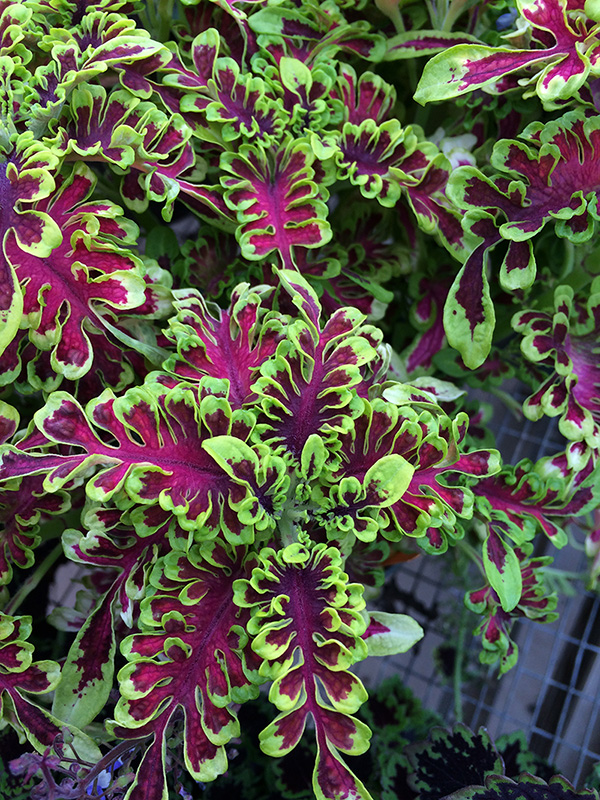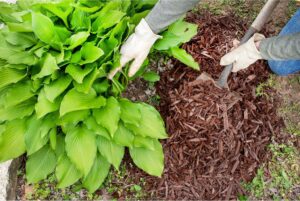By Trisha Gedon
STILLWATER, Okla. – Gardeners know the challenges of selecting plants that will thrive in Oklahoma’s extreme growing conditions. Fortunately, the Oklahoma Proven plant program can assist with selection.
“Oklahoma Proven is a plant promotion program to help guide gardeners toward appropriate garden selections that have been proven to grow well in Oklahoma’s diverse climate and soil types,” said David Hillock, Oklahoma State University Extension consumer horticulturist. “Each year, a tree, shrub, perennial and annual are selected. This year, we also included what we call ‘Collector’s Choice,’ which is geared toward the adventurous gardener and will require more care.”

The program began in 1999 with recommendations for a tree, shrub, perennial and annual worthy of Oklahoma landscapes. Selections for 2022 have been announced and include: tree – Ginkgo biloba (Maidenhair tree); shrub – Cephalanthus occidentalis (Buttonbush); perennial – Heuchera cultivars (Coral Bells or Alum Root); annual – Plectranthus scuteleroides (Coleus); and Collector’s Choice – Ungnadia speciosa (Mexican buckeye).
Maidenhair tree
The Maidenhair tree is unique in that there’s only one species of the genus. Its leaves have two lobes that are somewhat leathery. The tree can reach 50 to 80 feet high and 30 to 40 feet wide, so site selection is important. They are slow growers, taking decades to reach mature height. This tree isn’t picky about growing conditions and tolerates a range of soil conditions, making it a good choice for urban environments. Leaves are bright green in the summer, turning a bright yellow in the fall.
Buttonbush
Buttonbush is a native shrub found growing along streams and lakes across most of Oklahoma, excluding the panhandle. It typically grows about 5 to 8 feet tall and 4 to 8 feet wide. Gardeners who enjoy hummingbirds in the landscape will benefit as the clusters of white, fragrant buttonbush flowers are attractive to the fast flyers, as well as other pollinators such as bees and butterflies. This shrub is tolerant to heat and soil compaction but doesn’t do well in dry soil. It’s a great selection for a rain, pollinator or native garden.
Coral bells
Coral bells are a versatile perennial native to North America with attractive evergreen foliage and bell-shaped flowers, which range in color from pink to red and white and are favored by butterflies and bees. Some plants feature showy leaves with marbled patterns, dramatic veining and ruffled edges. They grow best in part shade, but many will grow in full sun if properly watered. Once established, coral bells are quite drought tolerant; however, due to a shallow root system, these plants should be watered regularly during dry spells. Coral bells may need to be divided periodically to keep them vigorous and healthy. Add a light layer of mulch around the plant in the winter to protect the roots from freezing.
Coleus
Coleus is a time-honored annual that is diverse and full of character. It features great foliage colors, patterns and forms and has traditionally been known as a good selection for shady areas in the landscape or as a house plant. However, many cultivars are now full sun tolerant. Too much shade will make the plant leggy. Keep the soil moist. It’s a great selection for a border, hanging basket or container. If grown indoors, keep it near a window for bright sunlight.
Mexican buckeye
The Mexican buckeye is a great choice for the adventurous gardener. This multi-stemmed large shrub or small tree reaches 15 to 30 feet tall and about 20 feet wide. Native to west/central Texas, Mexico and New Mexico, its fragrant pink flowers bloom as it leafs out. It can be used as a multi-trunk shrub or trained into a small tree. It is very drought tolerant and actually prefers dry areas, making it a great selection for central and western Oklahoma.
The Oklahoma Proven website has been revamped and features photos of all the 2022 selections, as well as additional details about each plant. Also available on the site are colorful photos and descriptions of Oklahoma Proven selections from 1999 to 2021.
“We all know gardening in Oklahoma is a mixture of knowledge and good luck,” Hillock said. “Choosing plants from the Oklahoma Proven selections is a great first step toward a successful growing season.”
OSU Extension uses research-based information to help all Oklahomans solve local issues and concerns, promote leadership and manage resources wisely throughout the state’s 77 counties. Most information is available at little to no cost.










